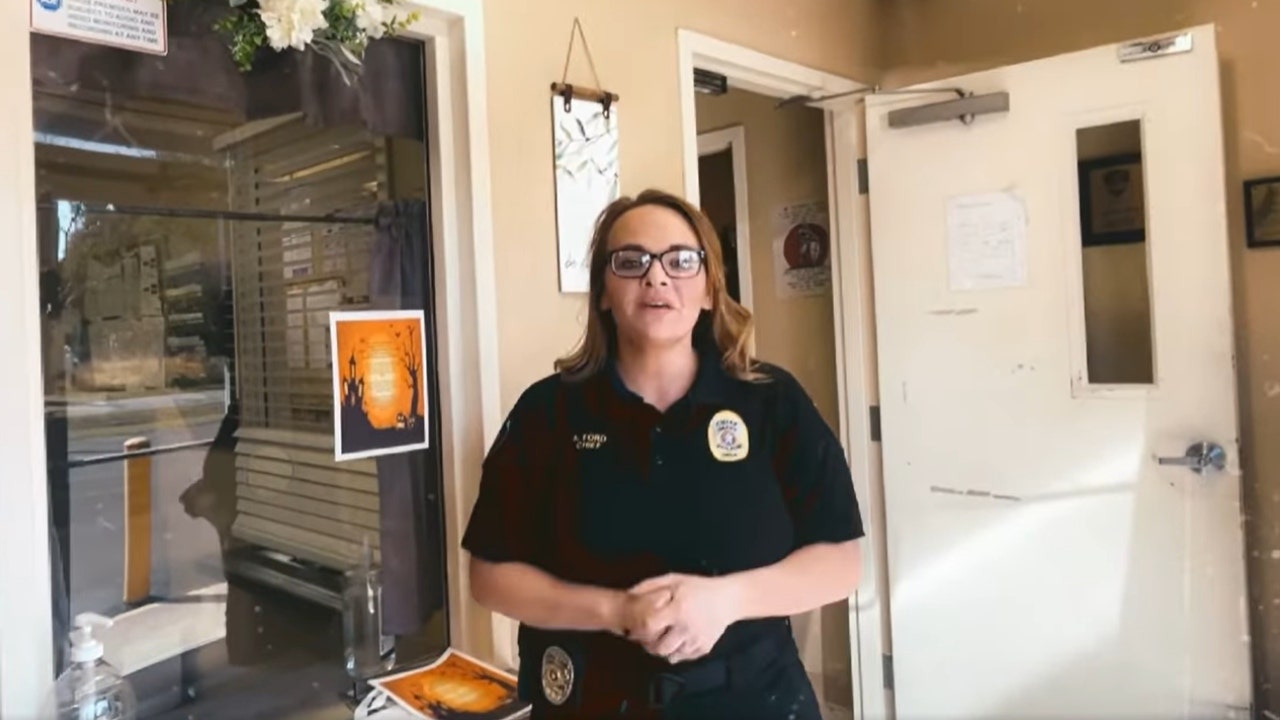The new tents popped up — one, two, three — on Columbia’s campus. It was a defiant gesture on Thursday afternoon by student activists, who were furious about the university’s decision to call in the police to clear an encampment used to protest the Israel-Hamas war.
If university officials thought that getting rid of the encampment, or arresting more than 100 protesters, would persuade students to give up, they may have been very wrong.
By Thursday night, the tents had disappeared. But scores of students took over a campus lawn. Planning to stay all night, they were in a rather upbeat mood, noshing on donated pizza and snacks. An impromptu dance party had even broken out.
“The police presence and the arrests do not deter us in any way,” said Layla Saliba, 24, a Palestinian-American student at the School of Social Work, at a news conference organized by Apartheid Divest, a coalition of student groups.
“If anything,” she added, “all of their repression towards us — it’s galvanized us. It’s moved us.”
At a moment when some campuses are aflame with student activism over the Palestinian cause — the kind that has disrupted award ceremonies, student dinners and classes — college administrators are dealing with the questions that Columbia considered this week: Will more stringent tactics quell protests? Or fuel them?
The decision by Nemat Shafik, Columbia’s president, to bring in law enforcement came a day after a remarkable congressional hearing in which she said that the university’s leaders now agreed that certain contested phrases — like “from the river to the sea” — might warrant discipline.
She was widely criticized by academic freedom experts for failing to stand up to lawmakers who wanted her to trample on academic freedom and free expression.
On Thursday, Ms. Shafik wrote to the campus that she was taking an “extraordinary step because these are extraordinary circumstances.”
The encampment, she said, “severely disrupts campus life, and creates a harassing and intimidating environment for many of our students.”
The students who created the encampment, she said, “violated a long list of rules and policies.”
Other schools have also turned to tougher measures. The Massachusetts Institute of Technology, New York University and Brown University have recently acted against student protesters, including making arrests.
And the leaders of schools like Vanderbilt and Pomona have defended suspending or expelling student protesters, saying that they are not interested in dialogue, but disruption.
Alex Morey, director of campus rights advocacy for the free speech and legal defense group Foundation for Individual Rights and Expression said “there can be good reasons” for removing students if they are violating neutrally applied policies.
But, she added, Columbia compromised itself when Ms. Shafik suggested to Congress, among other things, that the university may have investigated students and faculty for protected speech. “That’s very troubling,” Ms. Morey said, adding that consistently applied and viewpoint-neutral policies were the way out of this mess for Columbia and other universities.
Angus Johnston, a historian who studies and supports student activism, said he sees echoes of another protest in what is happening today.
In April 1968, during the height of the Vietnam War, Columbia and Barnard students commandeered five campus buildings, occupied the president’s office, and shut down the university’s operations.
After a week, the police moved to quell the protest, leading to more than 700 arrests. Officers trampled protesters, hit them with nightsticks, punched and kicked them and dragged them down stairs.
The outrage over the arrests helped students. They won their demands, including cutting ties with the Pentagon on Vietnam War research and gaining amnesty for demonstrators.
The 1968 protest, Mr. Johnston said, was “the beginning of a moment when American universities realized that their approach to suppressing protests wasn’t working.” And after student deaths at Kent State and Jackson State, administrators became averse to that sort of confrontation with their students, Mr. Johnston said.
The tactics of student protesters at Columbia today are much more benign than those used in 1968, Mr. Johnston added.
“When I first read about it, I assumed that they had taken over a building, right?” Mr. Johnston said. “But, no, they took over a lawn. That is the least disruptive way of occupying space on a campus.”
“I’m really worried,” he added, “about a spiral in which suppressing protest is going to lead to more aggressive protest.”
On Thursday night, at least 250 Columbia students gathered to cheer on their classmates, who were leaving One Police Plaza in downtown Manhattan after being arrested earlier in the day.
Catherine Elias, 26, a master’s student at the School of International and Public Affairs, was part of a small group of students who set up the encampment. Roughly 36 hours later, the police zip-tied her wrists and put her in a police bus with about 20 other protesters, who sang and chanted.
They were eventually issued summonses and released. Ms. Elias planned to go back and protest.
“I believe there was a spark today that’s going to spread across Columbia, across campuses in the U.S.,” she said, adding, “Columbia has no idea what they have unleashed.”
Olivia Bensimon contributed reporting.






